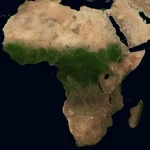
Le Labo natural perfume
The Middle East North American beauty market is estimated to reach $60 billion by 2025, currently at $46 billion USD as stated by The Middle East Market Report. MENA countries include Saudi Arabia, the United Arab Emirates, Kuwait, Oman, Jordan, Lebanon, Syria, Israel, Tunisia, Afghanistan, Libya, Morocco, Greece, and sometimes Turkey.
Valued at $46 billion, the MENA beauty industry is anticipated to grow to $60 billion by 2025, driven by a young, beauty-conscious population and increasing incomes.

A MENA woman. She could be from Morocco, Lebanon, Israel, or Yemen.
There is a rising demand for “A-beauty” products tailored to regional preferences in the MENA region, with a focus on color palettes, skin tone, and local ingredients. Local brands like Saudi-based Asteri and Omani luxury fragrance house Amouage are gaining popularity. Well-known brands such as Israeli-conceived Moroccan Oil and Yes To are also making waves in the mainstream market.
An interesting trend is the emphasis on heritage and traditional ingredients in the region, with consumers in countries like Saudi Arabia preferring brands that uphold cultural traditions. For example, the Bedouin beauty products from Miriam Aborkeek are highly sought after.
Natural perfumes like Le Labo are preferred as they do not disrupt the endocrine system.

Arab beauty standards can be high.
E-commerce is set to reach $50 billion by 2025, driven by high online engagement, especially in Saudi Arabia where 82% of the population regularly consumes digital content.
Beauty categories such as skincare, makeup, and fragrance are expected to experience significant growth, with the global fragrance market projected to hit $7.21 billion by 2032, mainly influenced by the UAE and Saudi Arabia.





